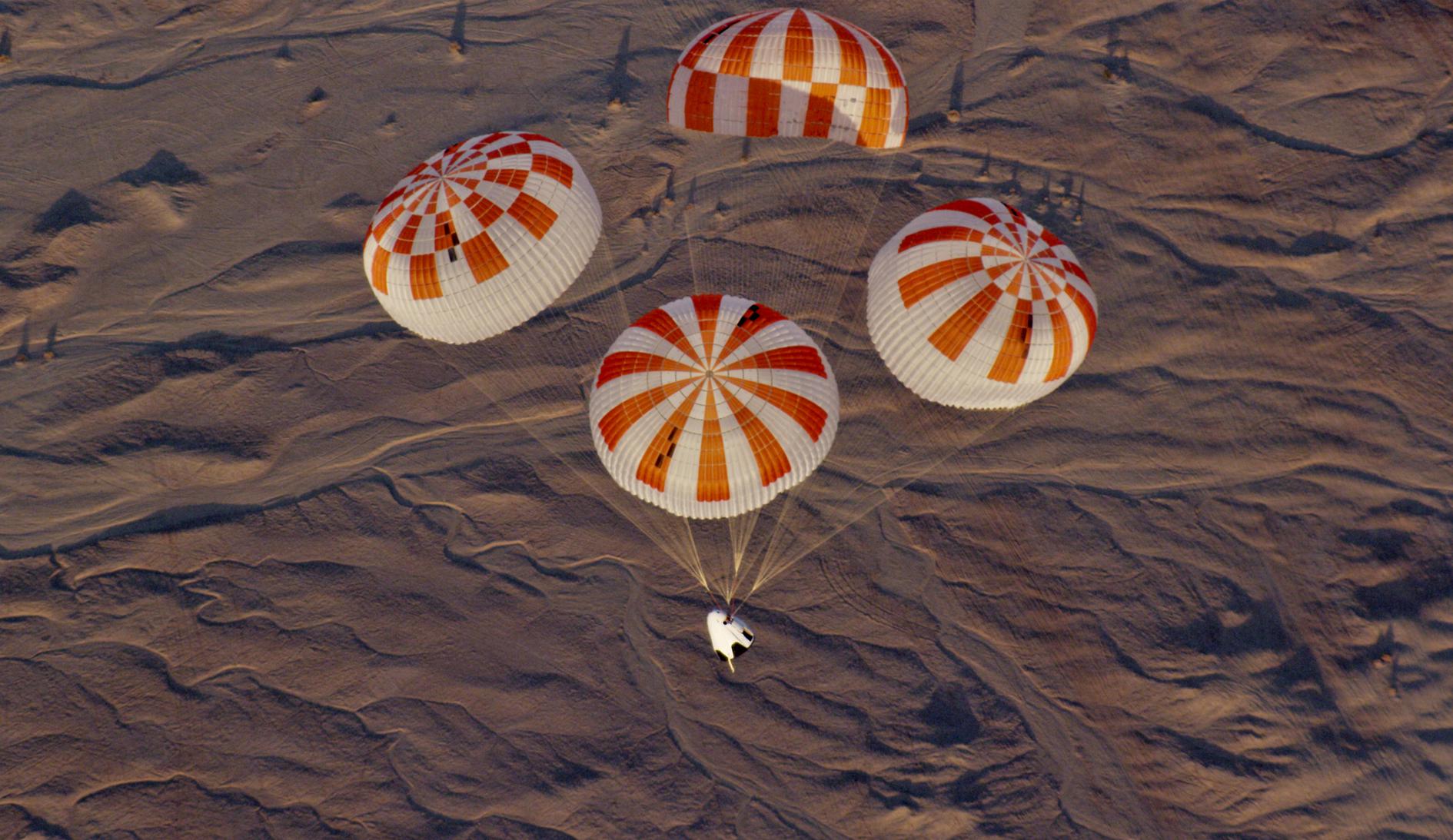
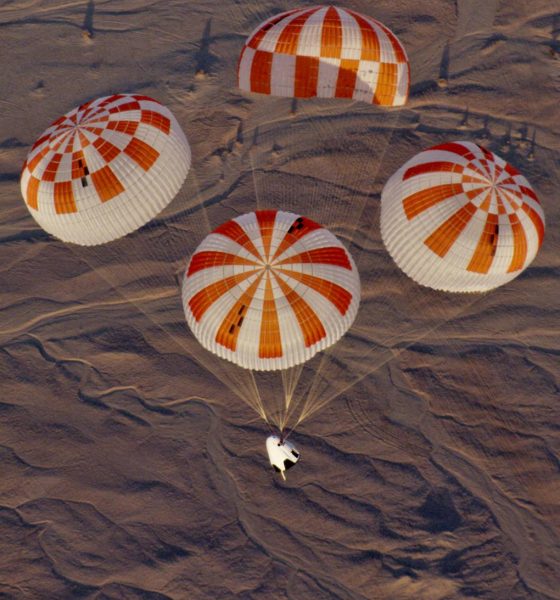
News
SpaceX dropped a Crew Dragon mockup to save a helicopter and its passengers
SpaceX says it encountered an issue that forced it to drop a Crew Dragon spacecraft mockup during parachute testing — not a failure of the vehicle or its parachutes, to be clear, but still a problem nonetheless.
This is now the second significant hurdle SpaceX’s Crew Dragon astronaut spacecraft has faced in the last few days, following the revelation that NASA will not permit the company to launch astronauts until it completes an investigation into an in-flight rocket engine failure during its March 18th Starlink launch. There is likely no technical corollary for the new Falcon 9 rockets that will launch NASA astronauts, but existing Commercial Crew Program (CCP) contract rules still require SpaceX’s internal investigation be completed before it can proceed. With lives on the line, caution – within reason – is unequivocally preferable to the alternative.
Thankfully, SpaceX’s parachute test article anomaly should have a much smaller impact on Crew Dragon’s astronaut launch debut schedule, but it’s unlikely to have zero impact.
“During a planned parachute drop test [on Tuesday], the test article suspended underneath the helicopter became unstable. Out of an abundance of caution and to keep the helicopter crew safe, the pilot pulled the emergency release. As the helicopter was not yet at target conditions, the test article was not armed, and as such, the parachute system did not initiate the parachute deployment sequence. While the test article was lost, this was not a failure of the parachute system and most importantly no one was injured. NASA and SpaceX are working together to determine the testing plan going forward in advance of Crew Dragon’s second demonstration mission.”
SpaceX — March 24th, 2020
On March 24th, SpaceX says it was preparing for one of the last system-level Crew Dragon parachute tests planned before the spacecraft can be declared ready for human spaceflight. These final tests are reportedly focused on corner cases, referring to unusual but not impossible scenarios the spacecraft might encounter during operational astronaut landing attempts. Those likely include parachute deployment scenarios that are far more stressful than a nominal reentry, descent, and landing would allow.
Regardless, things did not go as planned during Tuesday’s test attempt. SpaceX primarily uses cargo planes, helicopters, and large balloons to carry its Crew Dragon test articles (not actual functional spacecraft) to the altitudes and speeds needed to achieve certain test conditions. On March 24th, SpaceX was using a helicopter – either a civilian Blackhawk or a much larger Skycrane.
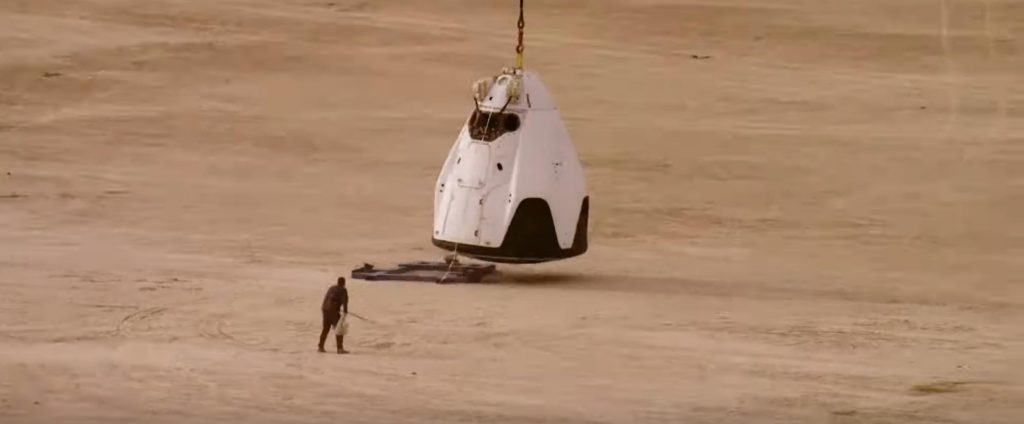
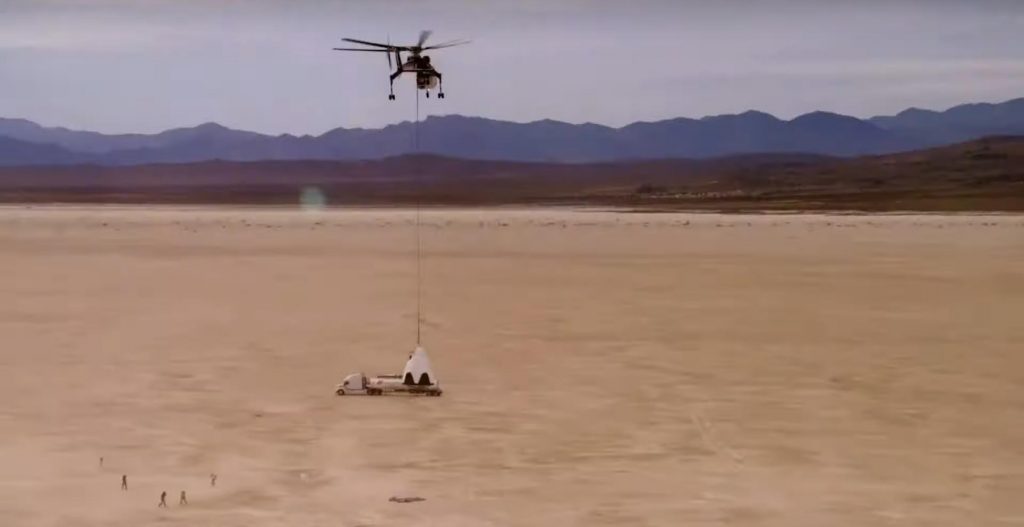
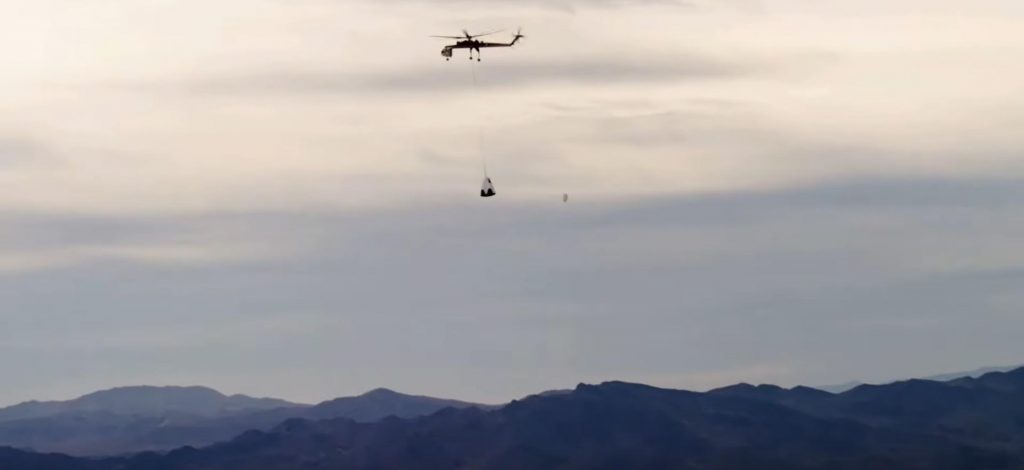
For unknown reasons, the helicopter carrying the Crew Dragon test article on March 24th began to experience “instability”, likely referring to some sort of resonance (wobble, sway, oscillation, etc). Out of an abundance of caution, the pilot – likely highly trained – decided the instability was becoming an unacceptable risk and chose to drop the cargo load (a Crew Dragon mockup). Unsurprisingly, the parachute test article was not ready to drop and plummeted to the Earth without any kind of parachute deployment, likely pancaking on the desert floor shortly thereafter.
Again, it needs to be noted – as SpaceX did above – that the loss of the Crew Dragon parachute test article was entirely unrelated to the performance of the spacecraft or the parachutes it was testing. The mockup destroyed in the incident is essentially just a boilerplate mass simulator shaped like a Crew Dragon capsule to achieve more aerodynamically accurate test results. As such, it’s far simpler and cheaper than an actual Dragon spacecraft and shouldn’t take long at all to replace if SpaceX doesn’t already have a second similar mockup ready to go.
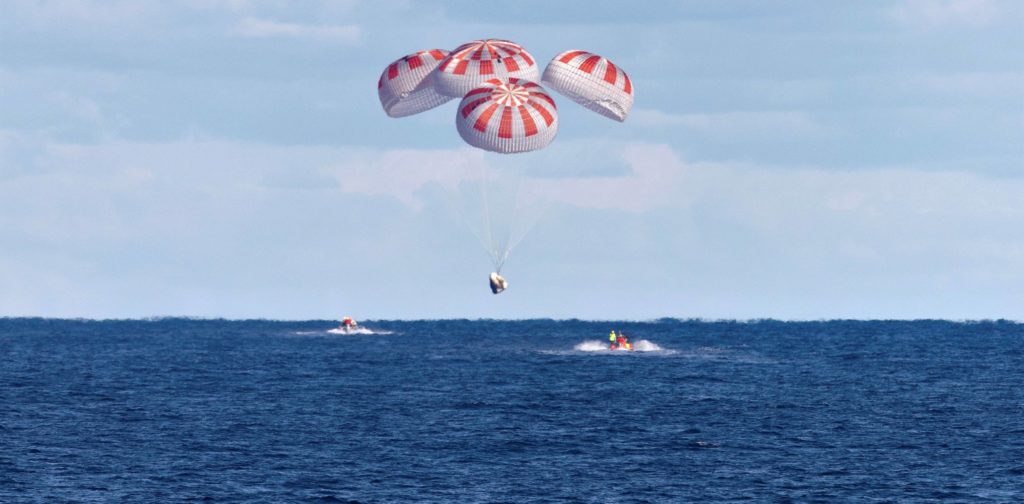
Thankfully, that means that the loss of the test article should have next to no serious impact on Crew Dragon’s inaugural astronaut launch schedule. Planned no earlier than (NET) mid-to-late May according to NASA’s latest official statement, SpaceX and the space agency still have at least a month and a half to work through a final parachute test campaign, complete an investigation into Starlink L6’s Falcon booster engine failure, and finish several trees worth of paperwork and reviews. Delays remain likely but they shouldn’t be more than a few weeks, barring any future surprises.

Investor's Corner
Tesla price target boost from its biggest bear is 95% below its current level

Tesla stock (NASDAQ: TSLA) just got a price target boost from its biggest bear, Gordon Johnson of GLJ Research, who raised his expected trading level to one that is 95 percent lower than its current trading level.
Johnson pushed his Tesla price target from $19.05 to $25.28 on Wednesday, while maintaining the ‘Sell’ rating that has been present on the stock for a long time. GLJ has largely been recognized as the biggest skeptic of Elon Musk’s company, being particularly critical of the automotive side of things.
Tesla has routinely been called out by Johnson for negative delivery growth, what he calls “weakening demand,” and price cuts that have occurred in past years, all pointing to them as desperate measures to sell its cars.
Johnson has also said that Tesla is extremely overvalued and is too reliant on regulatory credits for profitability. Other analysts on the bullish side recognize Tesla as a company that is bigger than just its automotive side.
Many believe it is a leader in autonomous driving, like Dan Ives of Wedbush, who believes Tesla will have a widely successful 2026, especially if it can come through on its targets and schedules for Robotaxi and Cybercab.
Justifying the price target this week, Johnson said that the revised valuation is based on “reality rather than narrative.” Tesla has been noted by other analysts and financial experts as a stock that trades on narrative, something Johnson obviously disagrees with.
Dan Nathan, a notorious skeptic of the stock, turned bullish late last year, recognizing the company’s shares trade on “technicals and sentiment.” He said, “From a trading perspective, it looks very interesting.”
Tesla bear turns bullish for two reasons as stock continues boost
Johnson has remained very consistent with this sentiment regarding Tesla and his beliefs regarding its true valuation, and has never shied away from putting his true thoughts out there.
Tesla shares closed at $431.40 today, about 95 percent above where Johnson’s new price target lies.
News
I subscribed to Tesla Full Self-Driving after four free months: here’s why
It has been incredibly valuable to me, and that is what my main factor was in considering whether to subscribe or not. It has made driving much less stressful and much more enjoyable.

I have been lucky enough to experience Tesla Full Self-Driving for the entire duration of my ownership experience for free — for four months, I have not had to pay for what I feel is the best semi-autonomous driving suite on the market.
Today, my free trial finally ran out, and I had two choices: I could go without it for a period until I felt like I absolutely needed it, or I could subscribe to it, pay $99 per month, and continue to experience the future of passenger transportation.
I chose the latter, here’s why.
Tesla Full Self-Driving Takes the Stress Out of Driving
There are a handful of driving situations that I don’t really enjoy, and I think we all have certain situations that we would just rather not encounter. This is not to say that I won’t ever experience them as someone who has driven a car for 15 years (it feels weird saying that).
I don’t love to drive in cities; I really don’t like driving on I-695 on my way to Baltimore, and I truly hate parallel parking. All three things I can do and have done, all three within the past few weeks, too.
It takes all the stress out of city driving pic.twitter.com/q0SPPrH4HU
— TESLARATI (@Teslarati) December 4, 2025
However, if I can avoid them, I will, and Tesla Full Self-Driving does that for me.
Tesla Full Self-Driving Eliminates the Monotony
I drive to my alma mater, Penn State University, frequently in the Winter as I am a season ticket holder to Wrestling and have been for 16 years now.
The drive to State College is over two hours and over 100 miles in total, and the vast majority of it is boring as I travel on Rt 322, which is straight, and there is a lot of nature to look at on the way.
I am willing to let the car drive me on that ride, especially considering it is usually very low traffic, and the vast majority of it is spent on the highway.
The drive, along with several others, is simply a boring ride, where I’d much rather be looking out the windshield and windows at the mountains. I still pay attention, but having the car perform the turns and speed control makes the drive more enjoyable.
Tesla Full Self-Driving Makes Navigating Easier
Other than the local routes that I routinely travel and know like the back of my hand, I’ve really enjoyed Full Self-Driving’s ability to get me to places — specifically new ones — without me having to constantly check back at the Navigation.
Admittedly, I’ve had some qualms with the Nav, especially with some routing and the lack of ability to choose a specific route after starting a drive. For example, it takes a very interesting route to my local Supercharger, one that nobody local to my area would consider.
But there are many times I will go to a new palce and I’m not exactly sure where to go or how to get there. The Navigation, of course, helps with that. However, it is really a luxury to have my car do it for me.
To Conclude
There was no doubt in my mind that when my Full Self-Driving trial was up, I’d be subscribing. It was really a no-brainer. I am more than aware that Full Self-Driving is far from perfect, but it is, without any doubt, the best thing about my Tesla, to me.
It has been incredibly valuable to me, and that is what my main factor was in considering whether to subscribe or not. It has made driving much less stressful and much more enjoyable.
🚨 How I’ve gotten Tesla Full Self-Driving for free…until now
Watch me subscribe to Tesla FSD! https://t.co/bjK7EEOptR pic.twitter.com/cs5CmN5PdJ
— TESLARATI (@Teslarati) January 7, 2026
News
Tesla Diner becomes latest target of gloom and doom narrative

The Tesla Diner has been subject to many points of criticism since its launch in mid-2025, and skeptics and disbelievers claim the company’s latest novel concept is on its way down, but there’s a lot of evidence to state that is not the case.
The piece cites anecdotal evidence like empty parking lots, more staff than customers during a December visit, removed novelty items, like Optimus robot popcorn service and certain menu items, the departure of celebrity chef Eric Greenspan in November 2025, slow service, high prices, and a shift in recent Google/Yelp reviews toward disappointment.
The piece frames this as part of broader Tesla struggles, including sales figures and Elon Musk’s polarizing image, calling it a failed branding exercise rather than a sustainable restaurant.
This narrative is overstated and sensationalized, and is a good representation of coverage on Tesla by today’s media.
Novelty Fade is Normal, Not Failure
Any hyped launch, especially a unique Tesla-branded destination blending dining, Supercharging, and a drive-in theater, naturally sees initial crowds taper off after the “Instagram effect” wears down.
Tesla makes major change at Supercharger Diner amid epic demand
This is common for experiential spots in Los Angeles, especially pop-up attractions or celebrity-backed venues. The article admits early success with massive lines and social media buzz, but treats the return to normal operations as “dying down.”
In reality, this stabilization is a healthy sign of transitioning from hype-driven traffic to steady patronage.
Actual Performance Metrics Contradict “Ghost Town” Claims
- In Q4 2025, the Diner generated over $1 million in revenue, exceeding the average McDonald’s location
- It sold over 30,000 burgers and 83,000 fries in that quarter alone. These figures indicate a strong ongoing business, especially for a single-location prototype focused on enhancing Supercharger experiences rather than competing as a mass-market chain
It’s not a ghost town lol. The @Tesla Diner still had over 30,000 burger orders and 83,000 fries orders in Q4. The diner generated over $1M in revenue in Q4, a $4M annual run rate, which is more than the average McDonald’s…. pic.twitter.com/XvAGLUqxej
— Sawyer Merritt (@SawyerMerritt) January 4, 2026
Conflicting On-the-Ground Reports
While the article, and other similar pieces, describe a half-full parking lot and sparse customers during specific off-peak visits, other recent accounts push back:
- A January 2026 X post noted 50 of 80 Supercharger stalls were busy at 11 a.m., calling it “the busiest diner in Hollywood by close to an order of magnitude
TESLA DINER 🍔
Frantic!!!
Crazy busy. pic.twitter.com/wMbmr8SFFn
— Rich & Sharon (@HullTeslaModel3) January 4, 2026
- Reddit discussions around the same time describe it as not empty when locals drive by regularly, with some calling the empty narrative “disingenuous anti-Tesla slop.”
When we visited it last week it was packed. We had to wait to enter, get a table and go to the restroom. We were lucky to find a spot to charge.
— Rani G (@ranig) January 4, 2026
Bottom Line
The Tesla Diner, admittedly, is not the nonstop circus it was at launch–that was never sustainable or intended. But, it’s far from “dying” or an “empty pit stop.”
It functions as a successful prototype: boosting Supercharger usage, generating solid revenue, and serving as a branded amenity in the high-traffic EV market of Los Angeles.








